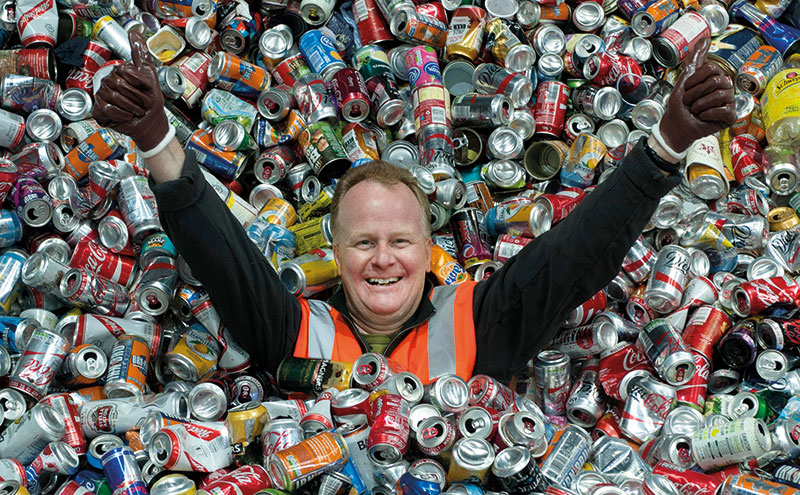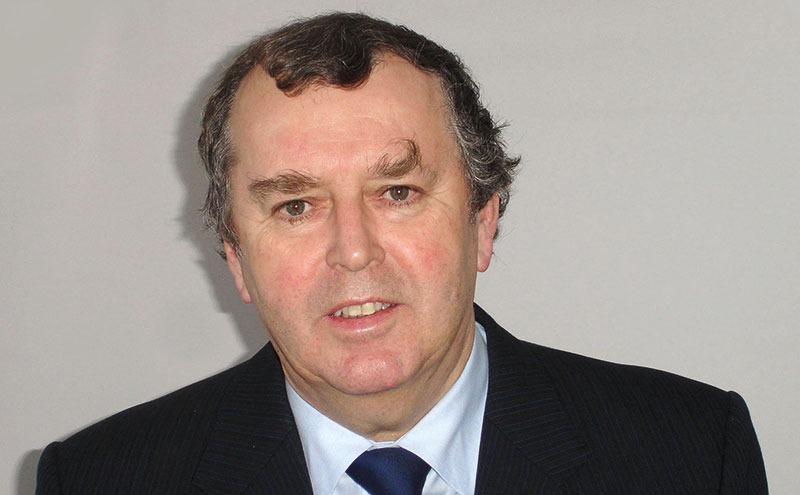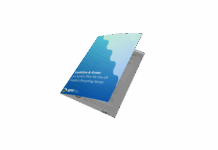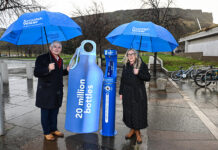First Minister Nicola Sturgeon has announced that Scotland is to introduce a deposit return scheme for drinks containers. Packaging Scotland reached out to three industry experts to weigh in on the issue and what it could mean for the country

John Mayhew, director of the Association for the Protection of Rural Scotland, welcomes the news after two years of campaigning
In her September Programme for Government speech, First Minister Nicola Sturgeon announced a deposit return system for drinks containers. Almost two years earlier, the Association for the Protection of Rural Scotland launched the Have You Got The Bottle? campaign, arguing for exactly this measure.
For us, the original reason for supporting deposits was litter reduction: research done by other organisations like the Marine Conservation Society and Greenpeace shows how many empty cans and bottles end up on our beaches, and the same problems are obvious in our countryside and towns alike.
But we quickly realised that deposits bring many more opportunities. These systems produce separate high-quality streams of recyclable materials, unlike domestic kerbside recycling bins, let alone street bins. We will continue to advocate for a Scottish system that includes drinks containers made from all materials; glass, metal and PET.
The volumes will be markedly higher, too. Return rates of above 90% for cans and PET are achieved in Scandinavian and Baltic countries in particular, far above the 50% or so achieved in Scotland up to now.
This simple change can help bring the idea of a circular economy closer to reality, reducing producers’ energy usage, cutting costs and increasing the share of recycled packaging on the market.
Starting on deposits before the rest of the UK gives Scotland a great opportunity to expand our skills and manufacturing base first.
Now, with the certainty provided by the First Minister’s speech, the process of designing a Scotland-specific system can begin in earnest. We are confident that Ministers will listen to all those whose operations will be in contact with Scotland’s deposit system, right the way through the chain from producers to the public, via retailers and on-sales, and back through recyclers.
If it’s done right, the bulk of the costs will be met by a combination of the unredeemed deposits and the value of the materials recovered. In some other European countries, the third revenue stream is a producer fee, typically set at around 0.2p per item.
So this is the time for Zero Waste Scotland to look around the world for best practice, and for business and local government to have their say. Some will be anxious about the effect this change will have for the way they work: we can only advise looking at how it works in places which already use deposits, and if possible talking to their counterparts in those countries.
By 2019 the system will be up and running; it’s in everyone’s interests that it be as effective, efficient and easy to use as possible. We will play a constructive part in those discussions, and we hope that you will too.

Can the bottle charge – an expensive experiment for Scotland. By Campbell Evans, Packaging Recycling Group Scotland Consultant
It sounds straightforward. Levy a fee on all beverage containers to encourage more recycling and reduce litter. But, it is not as simple as it sounds. A deposit return scheme (DRS) is complex, expensive to run, lacks clear evidence of effectiveness and disrupts existing waste collections. This explains why Ministers, who have had the power to bring in a levy since 2009, have not taken any steps to do so until now. It also explains why at least ten European countries have rejected introducing such schemes.
Scottish Ministers are still being cautious, saying they wish to develop a system that meets Scotland’s needs, rather than copy one from overseas. Ministers are wise to be cautious. Retailers are unlikely to welcome losing valuable shelf space to a reverse vending machine receiving returned bottles and cans, or having to deal with returned items manually over the counter in which case handling dirty bottles will impact on their ability to sell fresh food.
For householders, the convenience of Council kerbside collections will be replaced by car journeys to return bottles and cans, with queues at machines. One large retailer has calculated that if just 80% of the soft drinks it sells are returned to its stores, it will process one returned item every four seconds, more if the Scottish Government proceeds with plans to include also milk containers and glass in the scheme.
Scotland differs from countries that already apply a bottle charge. Around 80% of Scottish households benefit from kerbside collections. In Sweden only 30% of households receive such a service. Norway is often held up as an example of a successful DRS nation, yet its overall recycling record is exactly the same as in Scotland, without Scotland having to run a separate costly DRS infrastructure alongside Council waste services. Councils would still have to provide household collections, but they would no longer receive the most valuable items currently collect – bottles and cans – thereby losing revenue for local authorities.
It’s hard to see how a DRS helps small retailers. The Scottish Government has said it wishes to look at worries over reduced selling space or the handling of dirty bottles next to food. In some countries small shops can opt out of accepting returns. But, if a customer cannot return an item, he will shop elsewhere. Evidence from Germany demonstrates this. Shoppers accumulate deposit bearing items, drive to larger stores so increasing CO2 emissions and shopping less at local shops.
A concern about recycling rates and litter is given as justification for bringing in a bottle and can charge. Yet, return rates in Scotland for plastic bottles is rising and has already reached over 70%. Glass recycling is higher than this. Spending tens, possibly hundreds of millions of pounds to bring in and run a new waste infrastructure scheme that inconveniences the public, undermines local shops and disrupts local authority collections does not sound wise or necessary when progress is already being made.

Mike Ridgway, director of the Consumer Packaging Manufacturers Alliance raises some interesting points…
The suggested ‘drinks containers’ bottle deposit scheme for Scotland raises a number of both packaging and non-packaging issues. Not least amongst them is the definition of drinks containers.
Single trip plastic bottles are obviously the focus of attention with the very real concerns about pollution of the oceans and the detrimental affect on sea life, which have all recently been well documented in the media.
But what else would be covered? Would this include metal cans and glass containers? What about spirit and wine bottles? Following on from this, the investment for vending machines to issue refunds in all outlets would be enormous and who would pay? Obviously, ultimately the consumer!
In considering non-packaging consequences a trade in empty containers would develop and one can imagine vehicles heading north from England carry the new ‘valuable’ cargo of used empty containers.
A further consequence would be the emergence of the ‘empty container collector’. On a recent train journey in Germany (the leader in bottle recovery) I witnessed three separate people visiting train compartments seeking out empty plastic and can containers in order to obtain refunds.
A further question is… Would crushed bottles or cans qualify or must they be in their original state?
Returning to the direct consequences for packaging – all changes brings with them opportunities. Could a single trip cartonboard water pack be developed along the lines of the larger fruit juices containers now in use? Is it feasible for a gas tight cartonboard beer pack to be developed? All that is certain is that the consequences of such an introduction need to be well thought through rather than the consideration of… ‘What a good idea’.













